Since her coronation in 1953, Queen Elizabeth II has appeared on British coinage and the coinage of the countries of which she is Head of State. The portrait is updated to reflect the Queen’s age and change in appearance. Four different effigies have been used on British coins and those of most other countries in the realm or commonwealth.
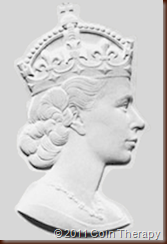

Cecil Thomas designed a ‘realm portrait’ which is similar in nature and appears in the same context as that of George VI who was king before and father to Queen Elizabeth II. They bear the same crown and most of the designs of the British and realm coinage didn’t change- as is normal custom.

Machin’s portrait is said to be a favorite of the Queen herself. When approached to pose for an updated portrait, she was most concerned about the quality of the new portrait not living up to the standards of Machin’s work.
The Machin portrait also has the distinction of longevity over the other three common portraits. It was in use for nineteen years (five more than the common portrait in use at present, as of 2011).
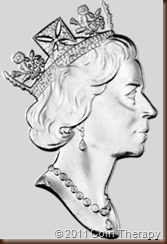

Canada began using a portrait designed by Dora de Pedery-Hunt in 1990. It is similar to Maklouf’s in design, but differs in orientation of the monarch. Side-by-side comparisons reveal the difference.
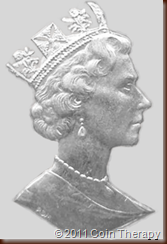 | Maklouf era ‘realm portrait’ used for a number of commonwealth coin portraits. It replaced the Machin portrait. |

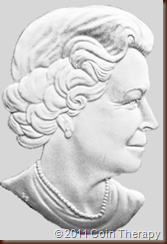 Canada began using a portrait similar to the Maklouf by Dora dePedery-Hunt in 1990.
Canada began using a portrait similar to the Maklouf by Dora dePedery-Hunt in 1990.
In 2003, a new portrait was commissioned in honor of the 50th anniversary of the Queen’s coronation. It is by Susanna Blunt and is in use presently, but is unique to Canada. One of the more noticeable difference, aside from the actual portrait is that the Queen does not bear a crown- unlike any other presently used portrait in the world.

Not all of the coins bearing the effigy of Elizabeth II have changed their portraits to reflect the age of the Queen. Maundy money in Britain still retains the first Gillick portrait. Belize uses the Cecil Thomas ‘realm portrait’ on fractional coins and the Maklouf portrait on the one dollar coin.
A few coin portraits of the Queen exist on an individual basis- appearing on only one coin or one denomination- separate from the typical circulation coins:
In 2008 and 2009, the isolated South Atlantic British Territory constituent of Tristan da Cunha which is part of the territories St. Helena and Ascension Island, issued coins bearing unique portraits of the Queen; a different portrait in both years. The denominations of the issue are 1/2p, 1p, 2p, 5p, 10p, 20p and 25p.
 | 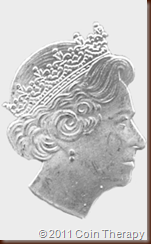 |
| 2008 Tristan da Cunha portrait | 2009 Tristan da Cunha portrait |
The Gillick and Maklouf portraits each lasted twelve years. The present portrait has been in use (as of 2011) for fourteen years. Given the upcoming 60th anniversary of her reign, it is reasonable to assume that a new portrait may be forthcoming.
During the course of the historic reign of Elizabeth II, the number of countries producing coins bearing her image decreased sharply. None of the coins that bear her portrait today are produced for circulation in precious metal. The last of these coins were mostly debased by 1965, with a few larger denominations, made in part of silver, existing only a few more years. In fact, the coins produced today represent the lowest intrinsic value in history with steel as the primary metal in content.
At one point, just over half the coins in production for circulation were made of silver. Now, only commemorative coins and special editions are silver.
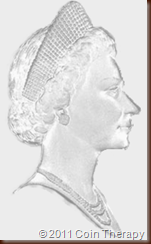


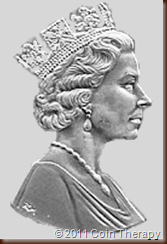
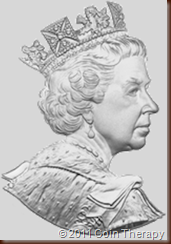
No comments:
Post a Comment